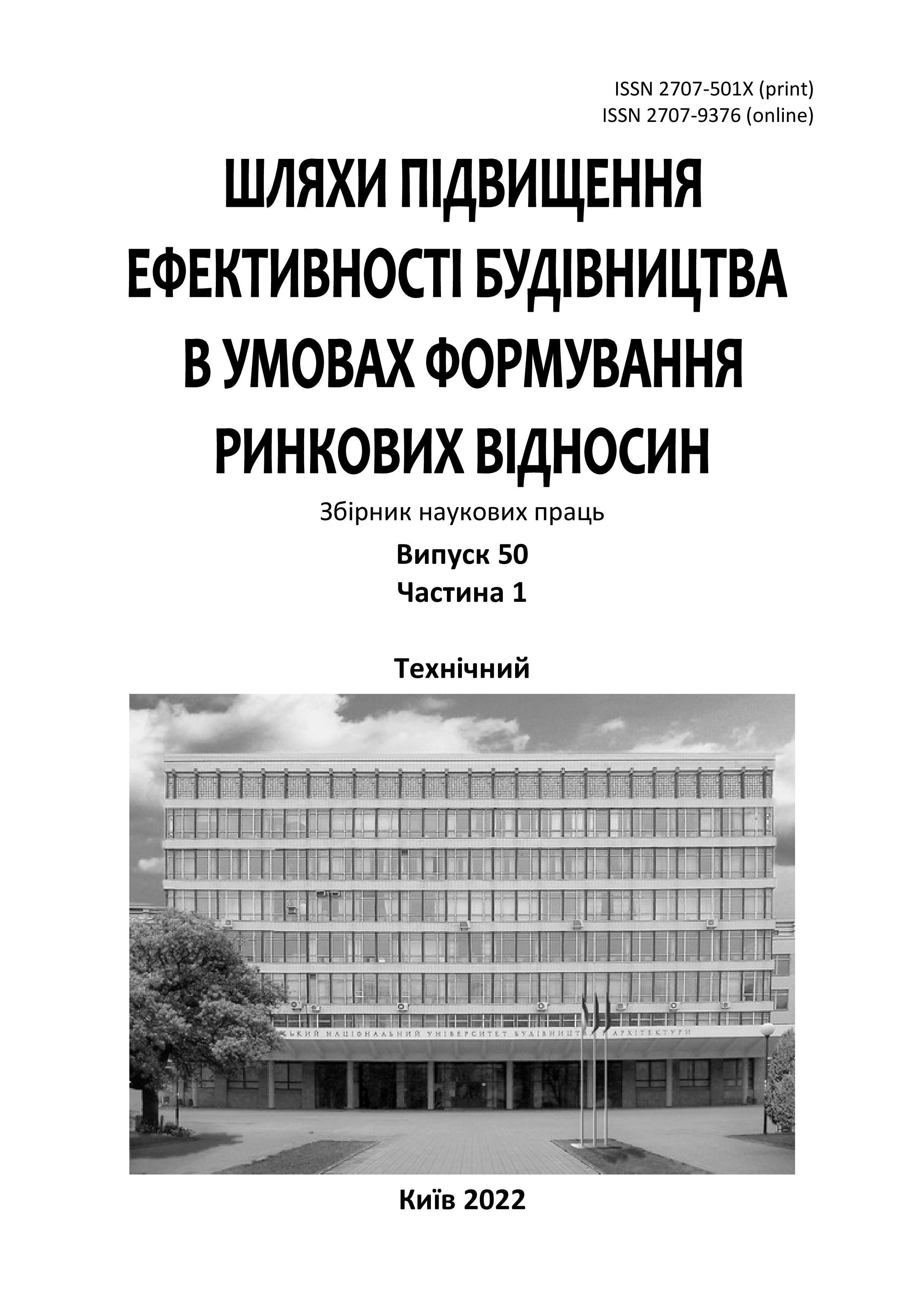Visual and graphic defragmentation of life and operational and production cycles of a construction enterprise according to standardized stages
DOI:
https://doi.org/10.32347/2707-501x.2022.50(1).101-109Keywords:
digitization of construction, project management, information modeling, construction enterprise, building Information Modeling, BIM technologiesAbstract
This article proposes a structured mechanism for forming the trajectory of the transformation of the construction enterprise management system. The system of indicators that currently assess the level of sustainability of the enterprise is described; a toolkit that allows you to use this system of indicators throughout the entire existence of the enterprise, taking into account the influence of multidirectional uncertainty factors that differ in the degree of influence, arising in the conditions of digitalization of the economy; the ability to determine the scenarios of the company's development depending on the degree of influence of uncertainty factors on its functioning; the ability to assess the effectiveness of the proposed management decisions to counteract these factors. The methodology of digitization of the administration of the activities of the construction enterprise - a stakeholder of construction projects - has been introduced and substantiated. The development of the enterprise, the leveling of the impact of actual and potential threats to the macro-environment through the rational use of all the benefits of the high stage of the life cycle have been studied. On the basis of the analysis of theoretical sources and the results of statistical analysis, a system of factors of scenarios for managing the economic potential of the enterprise with the qualitative characteristic of "proactivity" was determined: return on investment, the share of innovative types of products in the total number of products of the enterprise, the rate of renewal of fixed assets, profitability of production, profitability of production, return on capital , the coefficient of sustainability of financing. The development of adaptability, which is expedient at the stage of recession, is analyzed and involves the use of the company's capabilities to implement active rehabilitation measures in order to prevent stagnant processes and ensure a return to the stage of progression and prosperity in the shortest possible time. The following factors were determined for the scenarios of this group: quick liquidity coefficient, autonomy coefficient, maneuverability coefficient of working capital, suitability coefficient of the company's fixed assets, labor productivity, fund profitability.
References
Бєлєнкова О.Ю. Вплив сезонних коливань на оборотні активи будівельного підприємства. Інвестиції: практика та досвід. 2015. № 19 (травень). С. 48 – 53.
Гойко А.Ф. Економіка будівництва: навч. посіб. / А.Ф. Гойко, К.В. Ізмайлова, П.М. Куліков; за заг. ред. П.М. Кулікова. К.: КНУБА, 2014. 168с.
Гончар В.В., Якименко І.Ю. Методологія інформаційного забезпечення процесів управління промисловим підприємством. Теоретичні і практичні аспекти економіки та інтелектуальної власності: Збірник наукових праць. 2018. Вип.18. С. 12-20
Дикий О.В. Моделювання структурних характеристик процесу формування стратегії державно-приватного партнерства при реалізації інвестиційних проєктів. Шляхи підвищення ефективності будівництва в умовах формування ринкових відносин. 2012. Вип. №27. Ч. 2. С. 73-80.
Івахненко І.С., Куліков П.М., Рижакова Г.М. та ін. Економічне управління інноваціями: кол. монографія /за заг. ред. В. Г. Федоренка. К.:КНУБА, 2020. С. 159-178
Чуприна Х.М. Загальносистемні детермінанти цифровізації операційної системи управління будівельним підприємством // Ефективні моделі управління підприємствами в сучасних умовах: теорія і практик: кол. монографія за ред. П.М. Кулікова, В.Г. Федоренка, Г.М. Рижакової. К.:ТОВ «ДКС Центр», 2018. С. 390-416.
Чуприна Х.М. Функціональні методологічні підсистеми управління цифровими трансформаціями бізнес-процесів та оргструктур будівельних підсистем. // Система конфігурації менеджменту будівництва: модернізація методико-аналітичних інструментів: кол. монографія за ред. Г.М. Рижакової. К.:Вид-во ДНДІ інформатизації та економіки, 2020. С. 193-214.
Downloads
Published
How to Cite
Issue
Section
License

This work is licensed under a Creative Commons Attribution 4.0 International License.
Authors who publish with this journal agree to the following terms:
- Authors retain copyright and grant the journal right of first publication with the work simultaneously licensed under a Creative Commons Attribution License that allows others to share the work with an acknowledgement of the work's authorship and initial publication in this journal.
- Authors are able to enter into separate, additional contractual arrangements for the non-exclusive distribution of the journal's published version of the work (e.g., post it to an institutional repository or publish it in a book), with an acknowledgement of its initial publication in this journal.
- Authors are permitted and encouraged to post their work online (e.g., in institutional repositories or on their website) prior to and during the submission process, as it can lead to productive exchanges, as well as earlier and greater citation of published work (See The Effect of Open Access).

